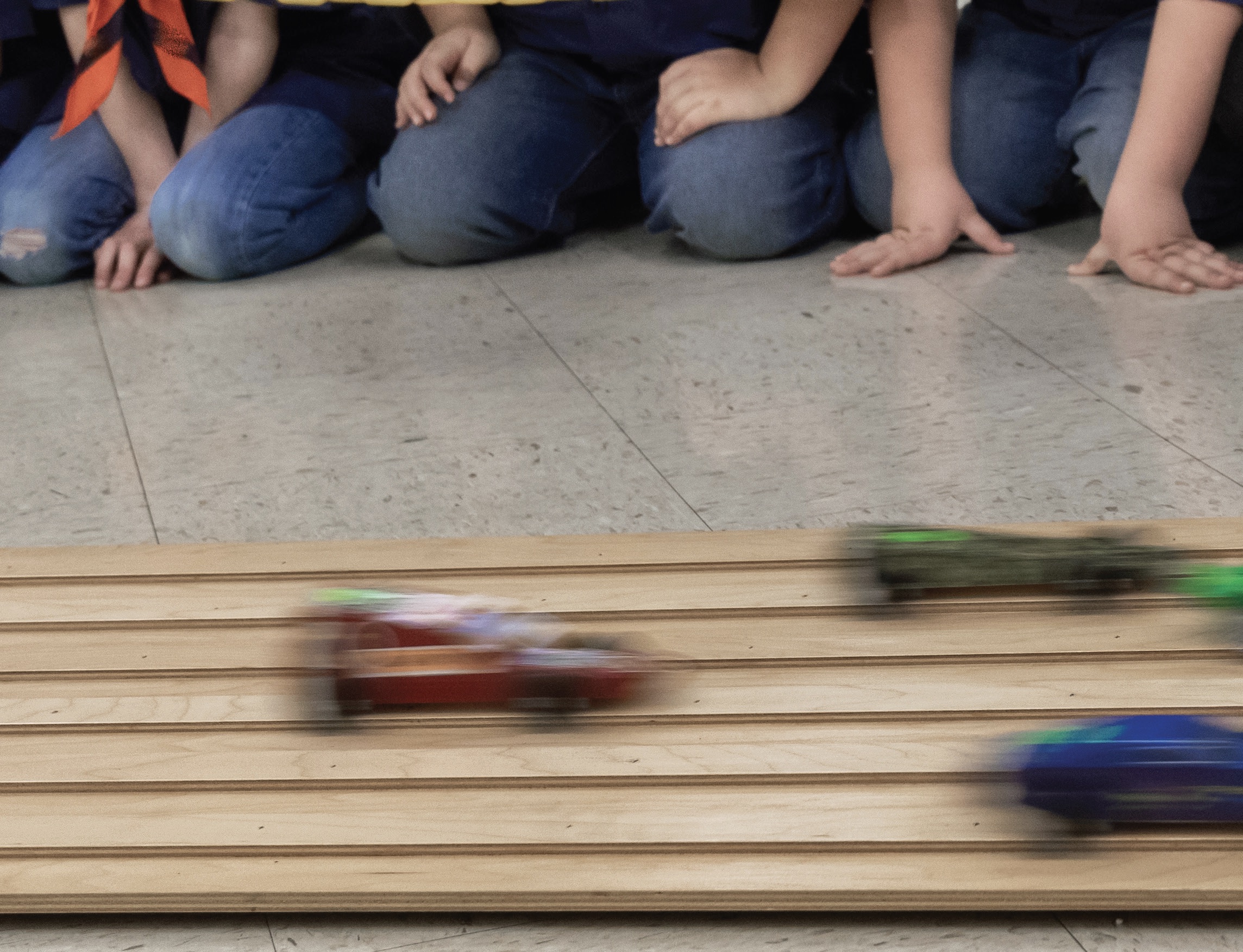Pinewood Derby
Dr. Edward P. Becker, Contributing Editor | TLT Automotive Tribology October 2022
There are many creative ways to gain an advantage in this contest.

Since the cars are powered by gravity, simple physics suggests the heaviest cars should gain the most energy on the inclined portion of the track.
The Pinewood Derby is an American contest, developed by the Boy Scouts of America, in which children, often with the assistance of an adult, build and race unpowered model cars on a special track. The cars must be constructed from a specific kit, consisting of a wood block, four nails to serve as axles and four wheels. The wood block can be carved or whittled, and all four axles and wheels must be used. The finished car may be decorated and must conform to specifications including maximum weight, width and length.
The cars are raced on a track that can accommodate two or more cars and begins with an inclined portion, transitioning into a level portion. Cars are raced in heats, and each car is raced at least once in each position on the track. The car that traverses the specified length of the track fastest is the winner.
Since the cars are powered by gravity, simple physics suggests the heaviest cars should gain the most energy on the inclined portion of the track, and, indeed, design guidelines from previous winners all recommend having the car at the maximum allowable weight. The rules do allow the cars to be weighted, using non-toxic weights, to compensate for weight loss due to carving of the wood. Another key to a winning design is to have the weight biased as far as possible to the rear of the car, and have the car be as long as the rules allow. The reason for this is, the starting position is determined by the front surface of the car resting on a gate, and the further rearward the center of gravity, the further the center of gravity will fall during the acceleration portion of the race. Care must be taken, however, not to shift the weight so far rearward that the car’s front wheels lose contact with the track (i.e., “pop a wheelie”) and the rear of the car drag on track, for the car will then lose velocity due to the sliding friction between the car and track.
Other allowable ways to get the cars to run faster include polishing the axles (to reduce friction between the axles and wheels) and using a dry lubricant (such as graphite or molybdenum disulfide) on the axles. Note that liquid lubricants are strictly prohibited, probably to prevent contamination of the racing surface.
As with most competitions, there have been some remarkably creative ways to try to gain an advantage, including the use of concealed motors. A much more subtle way to cheat involves an understanding of the most common form of starting gate. Usually the cars are held in position in the gate by a peg. The cars are released from the gate by the peg rotating down into a slot in the track on a hinge mechanism. If the peg is made of steel (or other ferromagnetic material), a small magnet concealed in the nose of the car can cause the car to gain momentum from the starting gate, swinging forward and down. Of course, if the magnet is too strong, the car will end up on its nose, rear wheels in the air and stuck to the post!
Ed Becker is a Fellow and Past President of STLE. He is currently president of Friction & Wear Solutions, LLC, in Brighton, Mich., and can be reached through his website at www.frictionandwearsolutions.com.